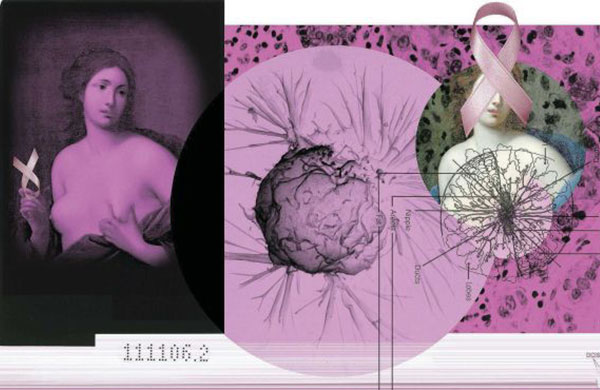 Fish Oil and Bedsores
Fish Oil and Bedsores
Anyone who has ever had a bedsore knows that they are very uncomfortable. Worse, they also pose life-threatening dangers. Now there’s good news for those confined to their bed. An Israeli research team recently announced that common fish oil helps heal pressure sores and may also alleviate pain.
Tel Aviv University Professor Pierre Singer and doctoral candidate Miriam Theilla designed an experiment to determine the impact of dietary fish oil supplements on the bedsores of critically ill patients.
Chock-full of Omega-3 fatty acids and antioxidants, fish oil has long been known to help lower blood pressure, reduce inflammation in the skin and joints, and promote healthy fetal development.
Singer and his fellow researchers looked at results of a previous study showing that dietary fish oil supplements raised oxygen levels in the body tissue of critically ill patients. They set out to determine whether the supplement could also help heal bedsores, which form under conditions of a lack of oxygen, reduced blood flow and moist skin.
The researchers studied 40 critically ill patients. Half of them were given standard hospital diets, and the rest had eight grams of fish oil added to their food every day.
After three weeks, those who had gotten the fish oil experienced a significant improvement. They were in less pain, their immune systems were more efficient and they experienced reduced inflammation throughout their bodies.
Singer, who has over 30 years of clinical and academic experience, said, “I think if people understand that nutrition can help wound healing we’ll be on the right track.”
Stoke Prevention
Women are more likely to have risk factors associated with stroke, such as migraines, depression, diabetes and abnormal heart rhythm known as atrial fibrillation.
Stroke is the fourth-leading cause of death for all Americans but the third-leading cause of death for women, after heart disease and cancer.
Women share many of the same risk factors as men, but they also have unique risks that come with pregnancy complications and hormone use, said Cheryl Bushnell, associate professor of neurology.
A stroke occurs when the blood supply to the brain is blocked or when a blood vessel in the brain ruptures, causing brain tissue to die.
The signs of stroke in women are similar to those in men, including face drooping, sudden numbness or weakness of the arm, and difficulty with speech or trouble understanding. But symptoms in women may be more vague or subtle. Women are more likely to have a change in their consciousness or their ability to communicate with people.
An estimated 6.8 million people in the United States are living after having had a stroke, including 3.8 million women, according to statistics from the American Heart Association. Each year, more than half of the estimated 800,000 people who have a stroke are women.
As women increasingly outlive men, their lifetime risk of stroke becomes higher. Women are also more likely to be living alone and widowed after suffering a stroke, and are more likely to be institutionalized, research shows.
“As the baby boomer generation ages, more people are at risk for stroke, and women in particular as they enter their 50s, 60s and 70s,” said Alex Dromerick, a neurology professor.
Women are more adversely affected by stroke than men. Now, more than ever, it is critical to identify women at higher risk for stroke and initiate the appropriate prevention strategies.”
The new guidelines say young women should be screened for high blood pressure before pregnancy and should be considered for low-dose aspirin and/or calcium supplement therapy to lower preeclampsia risk.
Women who have migraine headaches with aura—such as blinking lights or moving dots—should stop smoking to avoid higher stroke risks. Women over age 75 should also be screened for atrial fibrillation.
Help for Addicts
With the use of heroin on the rise and prescription painkillers still a dangerous lure for young people and other individuals throughout New York State, Assemblyman Steven Cymbrowitz, Chairman of the Alcoholism and Drug Abuse Committee, has introduced legislation to increase the availability of chemical dependency services available at local, community-based agencies.
Assemblyman Cymbrowitz said that as the state’s real-time prescription tracking system, I-STOP, has made opioid painkillers harder and more expensive to obtain, addicts have been turning increasingly to heroin.
“Unfortunately, many of these individuals have no access to treatment. In order to meet the needs of those suffering from addiction, we need a mechanism that will help NYS identify gaps in local treatment services and distribute additional funding in order to increase capacity for chemical dependence treatment services,” he said.
Maimonides Heart and Vascular Center
 Until now, patients with severe aortic stenosis (narrowing of the aortic valve opening) had to give up much of what makes life enjoyable. But a trailblazing new procedure at the Maimonides Heart and Vascular Center means they won’t have to give up hope.
Until now, patients with severe aortic stenosis (narrowing of the aortic valve opening) had to give up much of what makes life enjoyable. But a trailblazing new procedure at the Maimonides Heart and Vascular Center means they won’t have to give up hope.
Maimonides was among the nation’s first hospitals to offer TAVR (transcatheter aortic valve replacement), the newest breakthrough for those considered too high-risk for traditional heart valve replacement.
“Only a handful of Heart Centers in the nation are able to provide this option for heart valve patients,” said Dr. Jacob Shani, Chair of Cardiology Program at the Maimonides Heart and Vascular Center. “Our team of experts is unrivaled in exploring and developing the best therapies for cardiac problems.”
A transcatheter aortic valve replacement (TAVR) is an innovative approach to the treatment of severe aortic stenosis. Instead of standard open-heart surgery, a balloon catheter is placed in the femoral artery and guided into the heart. A compressed heart valve is then placed in the catheter and positioned directly inside the diseased aortic valve. Once in position, the balloon is inflated to secure the valve in place.
“TAVR is minimally invasive, with all the benefits that implies,” said Dr. Greg Ribakove, Chief of Cardiothoracic Surgery. “This is clearly the best option for certain patients who cannot undergo open-heart surgery.”
The patients who underwent the procedure at Maimonides are ecstatic over the results.
The Maimonides Heart and Vascular Center has a stellar reputation for excellence that spans over 100 years. It is one of the most comprehensive cardiac centers in the nation, offering invasive and noninvasive, medical and surgical, adult and pediatric care.
New Hypertension Guidelines
New hypertension guidelines recommend looser blood pressure treatment thresholds for older adults. Those 60+ should receive antihypertensive medications if their systolic BP is 150 mm Hg or higher or their diastolic BP is 90 or higher. This is a departure from previous recommendations.
Younger adults should begin drug treatment if their systolic BP is 140 or higher or their diastolic BP is 90 or higher. The 140/90 threshold applies to adults with chronic kidney disease or diabetes as well, also a change.
Initial drug treatment should include a thiazide-type diuretic, calcium channel blocker (CCB), angiotensin-converting enzyme (ACE) inhibitor, or angiotensin-receptor blocker (ARB).



